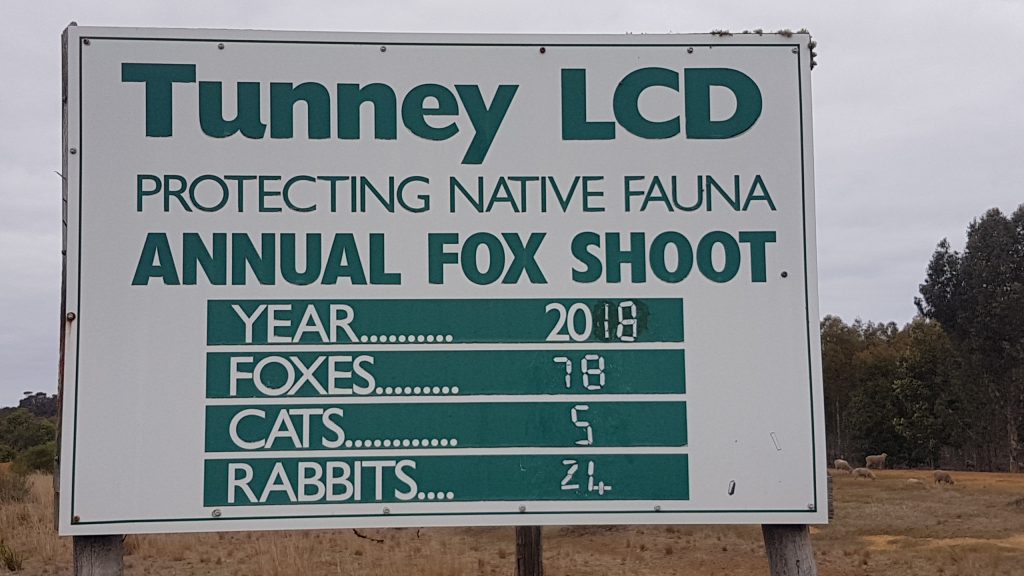Ross and Graham on a spotlighting sortie in Rover the buggy (Graham driving). Armed with a rifle, .223Rem firing 55gn Ballistic Tip projectiles @ 3,150fps. A rifle .243Win firing 70gn Ballistic Tip projectiles @ 3,500fps and 12Ga shotgun firing BB size shot.
Fox 1 A 6.72kg male 2 ½ Yo, came from 200m to the sound of the “Secret Weapon” (SW) and stopped at 35m. Ross took him with his .223. He had eaten beetles, caterpillars and had 7 tape worms and a round worm in his small intestine.
Fox 2 This time a 1 ½ Yo female, 5.33 Kg came to 35m and succumbed to the .223. Gut contents, carrion, beetles and caterpillars. She had given birth to 4 cubs.
Fox 3 Graham took at 231m a 2.79Kg male cub with his .243. It was on a dam bank in a canola stubble. It had eaten canola, beetles, carrion and earwigs.
Fox 4 Was called in from 400m to 50m. Ross, with his .223,took this 1 ½ Yo, 5.75kg female that had not given birth, but had eaten canola, beetles and grasshoppers.
Fox 5 An adult fox also came to the (SW) at the same time. It turned and ran away through high grass when Ross shot fox 4. At about 85m, it was stopped by a snap shot from Graham’s .243. It could not be found for examination.
Fox 6 Would not come to any caller, so it was perused for about 700m when Ross flattened the 2 ½ Yo female weighing 4.38kg with the 12Ga shotgun. She had eaten Grasshoppers, Barley and Canola. One round worm was in the small intestine and she had birthed 6 cubs.
Fox 7 At 80m from an awkward position and a nearly obscured position Ross managed to take this 2.46kg female cub with his .223. It had a varied diet of Carrion, Beetles, Earwig, Caterpillar, Canola, Earthworms and a Lizard.
Fox 8 Would not come to any caller. As the barley stubble paddock had numerous bog mark ruts, we slowly followed this 3.20kg male cub for hundreds of metres to where Ross pulled off a running shot with his .223 at 130m over the fence in the next paddock. This last fox for the night had eaten a Centipede and Beetles
There were 7 other foxes that were seen but not shot at due to distance and lack of opportunity.

